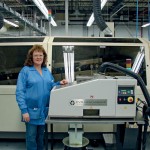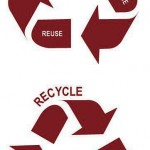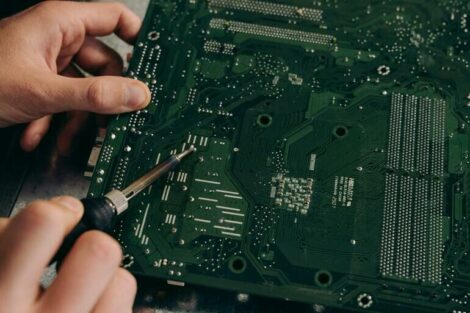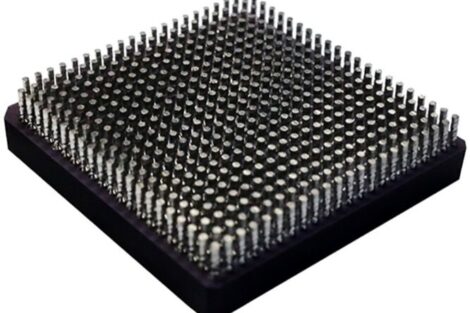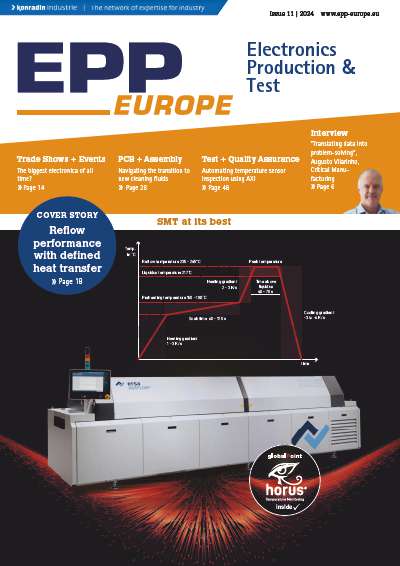The world price of solder is at an all time high, so reducing solder consumption – and therefore costs – should be at the top of every electronics manufacturer’s wish list. On average companies throw away 75 % of their solder as dross, but by automating the solder dross recovery from their wave soldering process, a company can actually reduce de-drossing time by up to 80 % and solder purchases by up to 50 %. Here we look at how one company worked with their equipment supplier to automate this process in-house.
Recycle, reduce, reuse is set to become as much an industry mantra as smaller, faster, cheaper as issues such as energy and resource consumption and waste management are increasingly pushed to the fore. One company already embracing these issues is contract manufacturer Kimball Electronics, who found that the upside can result in considerable cost savings. A delve into the history of Kimball Electronics and you very soon build a picture of a company born from resilience, an intelligent response to market trends and an adept capability to make each business opportunity a success. The company began as The Jasper Corporation in 1950, based in Jasper, USA and in 1959 acquired W.W. Kimball Piano Co. The electronics sector of the business began in 1961 with the production of electronics for its organ business and in 1963 was awarded its own identity as Kimball Electronics. In 1983 the company gained a major contract to build keyboards for personal computers and in the subsequent ten years shipped over nineteen million units. In 1992 they began producing computer mice, producing over fifty million before the business was taken offshore. In 1985 the last Kimball organ was built and the company also began producing products for the automotive industry, with their first anti-lock brake system, and in 2004 produced the fifty millionth system for the same customer. The rest, as they say, is history and today Kimball Electronics is a major international supplier of contract manufactured electronic components.
The industry has seen many changes since 1961 and today, as the world is forced to look at its impact on the planet, manufacturing too has seen the spotlight cast an eye over its energy output, resource consumption and waste management. Marla Wineinger, responsible for the wave solder machines, played her part in looking at the impact of their business. “As a company we had a high consumption of solder bars and I felt sure there must be a way in which we could reduce this,” she said. “Of course as a company it is our responsibility to look at reducing costs wherever possible, but as an industry we must all look at reducing the world’s resources we use too.”
At the time Kimball Electronics was putting the dross from their wave soldering machines into a 55 gallon drum and selling it to outside sources for recycling. “I wanted to look into whether it would be possible to deal with the solder dross more efficiently, to ultimately reduce our usage, but also to see whether this could be achieved by bringing the recycling process in-house,” added Marla Wineinger. “That said the challenge would also be to find a solution which would be very simple so that it did not impact heavily on our day to day production cycle. After conducting some research I became aware of the British based company EVS International, based on the Isle of Wight, England. The company manufacture solder dross recovery systems and has been doing so for several years, with hundreds of systems sold worldwide.”
Kimball Electronics contacted EVS International’s Director, Simon Norman and his team worked in conjunction with Marla Wineinger to look at their production and wave soldering processes. “It soon became clear that Marla Wineinger was correct in her assumption, there was indeed a much more effective solution for their needs,” explained Simon Norman. “With the high price of solder a company really can benefit enormously from recovering pure solder from their solder dross. Companies who incorporate our equipment into their production process, for instance, can expect up to an 80 % reduction in de-drossing time and up to a 50 % reduction in solder purchases, so with the rising cost of solder the return on investment a company can expect is seen in months – not years.”
There are added benefits to recovering pure solder from solder dross with an EVS system, such as improvements in both process and line productivity. With a cleaner wave pot manufacturers will experience a significant reduction in shorts and bridging on the board, as well as reduced wave maintenance. The system will provide a consistent wave height and improved solder quality, due to reduced oxidation, and users have the potential to dramatically reduce their consumption of Nitrogen. Also there are environmental standards to consider, such as ISO14001, which is fast becoming mandatory in our industry. Gaining or retaining accreditation is significantly helped by recycling dross at the point of manufacture.
The ISO14001 standard, published in 1996, was pioneered by the British Standards Institute (BSI). It is designed to enable each individual business to create and monitor an environmental management system to suit their particular activity. Application of an Environmental Management System to ISO14001 will show practical business results in terms of increased efficiency and reduced costs, as well as environmental benefits for the whole community. ISO14001 improves operational efficiency and cost reduction in areas such as energy consumption, waste minimization and primary resource utilization.
Following further research into Kimball Electronics’ manufacturing process, EVS was also able to assure that bringing the process in-house, with an automated process, would have very little impact on their day to day routine and workload. The operator would be able to de-dross the wave then carry on and prepare the wave for production while the equipment was performing its de-drossing cycle. Working in conjunction with Marla Wineinger it was decided that the most efficient system to match Kimball’s needs would be the EVS 6000 solder dross recovery machine which coupled with service and support of the company would ease the transition of bringing this element of their process in-house. The system can recover pure solder from both lead based and lead-free solder dross. The system is capable of handling up to 20 kg/44 lbs, with the capacity for single operation de-drossing of even the largest wave soldering machine. A large integrated hopper makes rapid transfer of dross both simpler and safer and would speed up Kimball Electronics de-drossing by up to 50 %. Using an enclosed automated system, hot dross is loaded into a large hopper and sealed into the machine. Once started by the operator, the process recovers the solder into a solder tray in the form of ingots that are easily placed back into the solder pots; it then deposits the spent dross automatically through a chute to a covered dross bin. After the start button has been pushed the operator does not need to have any further intervention until the solder ingots are removed, a cycle which takes six minutes plus cooling time. Because the process is self contained it avoids excessive handling of heavy direct lead contaminated dross and can operate with its own filtration system to filter out smells and noxious fumes. A hopper extraction system is utilized to prevent the escape of any fumes and dust which may be generated while loading. It also uses no chemicals, radiation, additives or other noxious substances.
Air is extracted via a powerful stand-alone four part filtration system, which ensures that the air emitted is cleaner than the surrounding workplace. An automatic air-knife cools the molten solder ingots until safe to handle, with premature removal of the ingot tray prevented by a safety lock.
Safety in the workplace is of course paramount, not only for the operating procedure but also for the routine maintenance and cleaning functions. Because of the nature of the process extensive safety features have been built into the EVS 6000 to protect against misuse. A variety of switches and sensors are deployed and all electrical and electronic circuitry is fuse protected. Maintenance is assisted by prompts from an LCD read out and facilitated by easy access to all working parts of the machine and routine cleaning can be carried out from a comfortable standing position.
In the last three years Kimball Electronics has introduced three systems at their plant in Jasper and two in Reynosa, Mexico. “As explained, ease of use was of prime importance to us,” added Marla Wineinger. “I didn’t want it to impact heavily on our existing workload. The equipment can be used with just one existing operator, so even though we have added another process to our day we required no additional labor. It really was as simple as plug in and go – with minimal training required.” “We can now recover waste material from our wave solder process and return it to usable product on site at the point of manufacture, so we have certainly achieved what we set out to by bringing this process in house,” said Marla Wineinger. “However, there have been many unexpected benefits too, on top of reducing the material going into the waste stream, as we have been able to reduce machine set up time and machine downtime. We have reduced our administration and improved the working area, with no noxious fumes and a cleaner workshop floor and, of course, we have reduced our solder bar usage – which in turn has provided considerable cost savings. All in all this has been a real success story for us and represents the largest payback of any product we have purchased. Kimball Electronics has now agreed to beta test EVS latest system, the EVS 1000.”
“Kimball Electronics is a very forward thinking company and it has been very rewarding to see the benefits they have been able to gain since the start of this project,” summarised Simon Norman. “2008 has been an excellent year for us, culminating in our latest EVS 1000 system winning Best Product – Europe.” One of the major contributing factors to EVS International’s success has been the high cost of solder, added to the equation by the widening adoption of lead-free solder at a 200 to 300 % premium over lead solder. The electronics industry is now switching on to the benefits of ISO14001, with more and more companies actively pursuing what EVS call ‘Efficiency, Effectiveness and Cost Reduction’.
EPP Europe 417
zusammenfassung
Das Lötzinnrückgewinnungssystem kann aus Lötkrätze, die als Oxidationsprodukt der Legierung sonst als Sondermüll kostenaufwändig entsorgt werden muss, innerhalb weniger Minuten reines Lötzinn zurückgewinnen. Dies trägt auch dazu bei, den Wellenlötprozess qualitativ zu verbessern. Bei regelmäßig abgeschöpfter Krätze wird die Welle deutlich sauberer. Das System eignet sich besonders für Anwender mit geringeren bis mittleren Mengen von Lotkrätze. Mit Hilfe des Systems lässt sich der Einsatz von Stickstoff erheblich reduzieren oder man kann sogar völlig darauf verzichten.
Le système de récupération d’étain à braser permet de récupérer en quelques minutes un étain pur à partir de déchets, qui, en tant que produits d’oxydation de l’alliage, doivent être éliminés de manière coûteuse comme déchets dangereux. Ce système contribue également à améliorer de façon qualitative le processus de brasage à la vague. En cas de production régulière de déchets, la vague est nettement plus propre. Le système est particulièrement adapté aux utilisateurs générant des quantités faibles à moyennes de déchets. Ce système permet de réduire sensiblement l’utilisation d’azote, voire d’y renoncer complètement.
Il sistema di recupero dello stagno di saldatura è in grado di recuperare entro pochi minuti stagno puro dalle scorie di saldatura che, in quanto prodotto di ossidazione della lega, dovrebbero altrimenti essere smaltite come rifiuti speciali. Questo contribuisce anche a migliorare la qualità del processo di saldatura ad onda. L’onda è notevolmente più pulita se le scorie vengono asportate regolarmente. Il sistema è particolarmente adatto agli utenti con quantità piccole e medie di scorie. Consente di ridurre notevolmente, addirittura di eliminare completamente, l’utilizzo di azoto.
Share:




